When it comes to our home interior, many people try to be trendy with the current interior design vogue ensuring that they are visually outstanding. With this common trend of interior wall panelling, it has taken over the other wall finishes like paint, tiles cladding, wallpapering, etc. Amongst the most wall panels, the ‘PVC Wall Panels’ are more common for the interiors to enhance the look of your home along with the furnishings and floor coverings.
Do you want to know why you should choose the ‘PVC Panels’ for your interiors? We are happy to tell you why?
Did you know? 50% of PVC products are used in construction. It is a low-cost material that has replaced wood in many interior related items.
In the 1970s, Germans were the first to use the PVC sheets in Walls as a decorative interior finish. It was quite a unique and smooth surface finish available compared to the other wall coverings at that time.

PVC panels are such Eco-friendly product that are trending because of its varied properties such as impact resistance, durability and flexibility. These are light weight panels that are easily available in the market at an affordable rate.
Types of PVC Wall Panels for Interiors
01. PVC Foam Board
PVC Foam Board is prepared by PVC foaming and pressing with additives. These are available in thickness ranging from 1mm to 20mm. We generally use 4 mm or more thickness for panelling a wall. The size of PVC foam boards varies from 1.22m to 2.05m width and 2.44m and 3.05m length. These are available in varied bright colour shades like white, black, yellow, red, green, blue, etc.
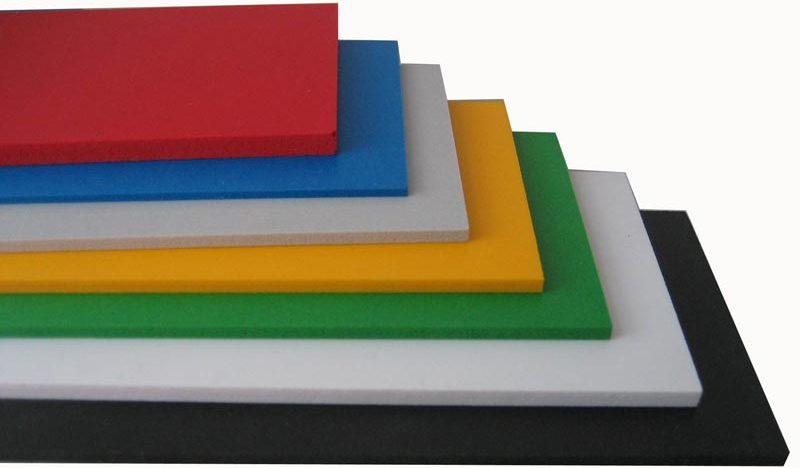
PVC Foam Boards
The boards with thickness more than 6mm are majorly used for external wall cladding material. They become an extra layer of protection. The layer protects the wall from rain, snow, hail, and sunlight. They also become insulation for the room inside and reduce the intensity of external sound entering the walls.
We can also have CNC cutting in such boards to create decorative patterns on the wall panelling.
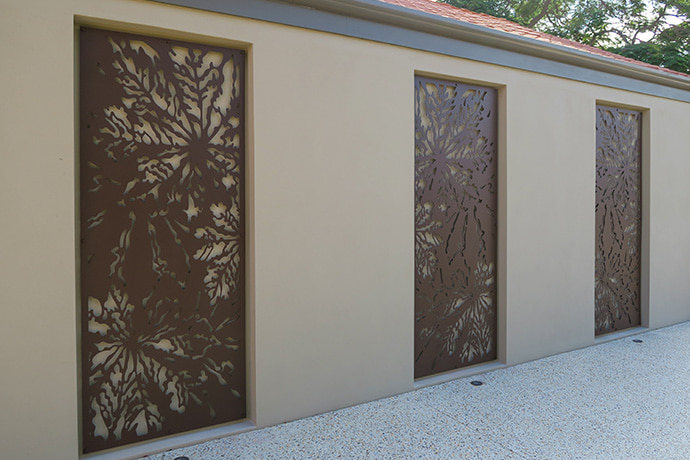
Jali in PVC Foam Boards
02. PVC Sheets
These are PVC sheets, sandwiched between the longitudinal grid of PVC within them. This grid provides the sheet strength and makes the sheet lightweight, therefore also known as light weight panels.
PVC wall panels have edges with an inter locking system, so that water cannot pass through the joint. Some designs have grooves, which gives a stripes form to a wall. In such patterns, the joints are not at all visible as they merge with the grooves.

PVC Sheet Wall Panelling
The most commonly available PVC wall panels size of 8mm thick in India is 10-inch wide and 10 feet long.
They are available basically in the following tone:
Wooden Pattern:
- There are varied wooden texture PVC sheets available that mimic the wooden look. They also have 4-inch plank groove pattern which gives a uniform wooden plank look on the wall. The wooden textures are achievable by printing and hot foil treatment on the surface.
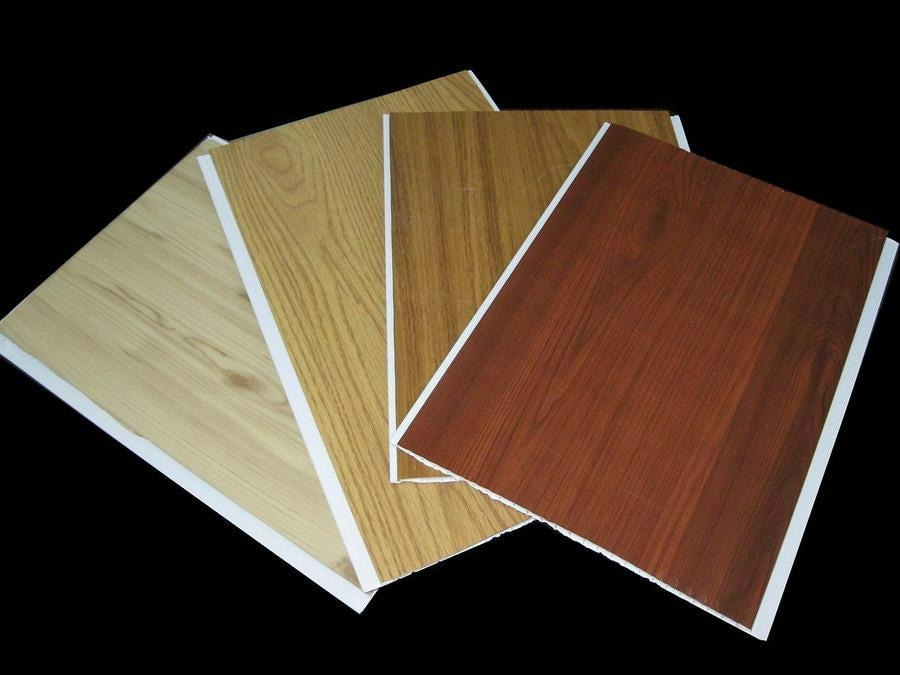
Wooden Texture in PVC Sheets
Golden Stripes:
- The edges of PVC panels are treated with golden or silver lines, to overcome the plain bald look. Such sheets are used in offices and commercials.

Silver Stripes in PVC Sheets
Solid Colour:
- These are plain colour sheets used in bathrooms and kitchen as per our choice. Colours are achievable by treating the surface with semi transferable printing or hot foil treatment. Thus it can have many colours and textures
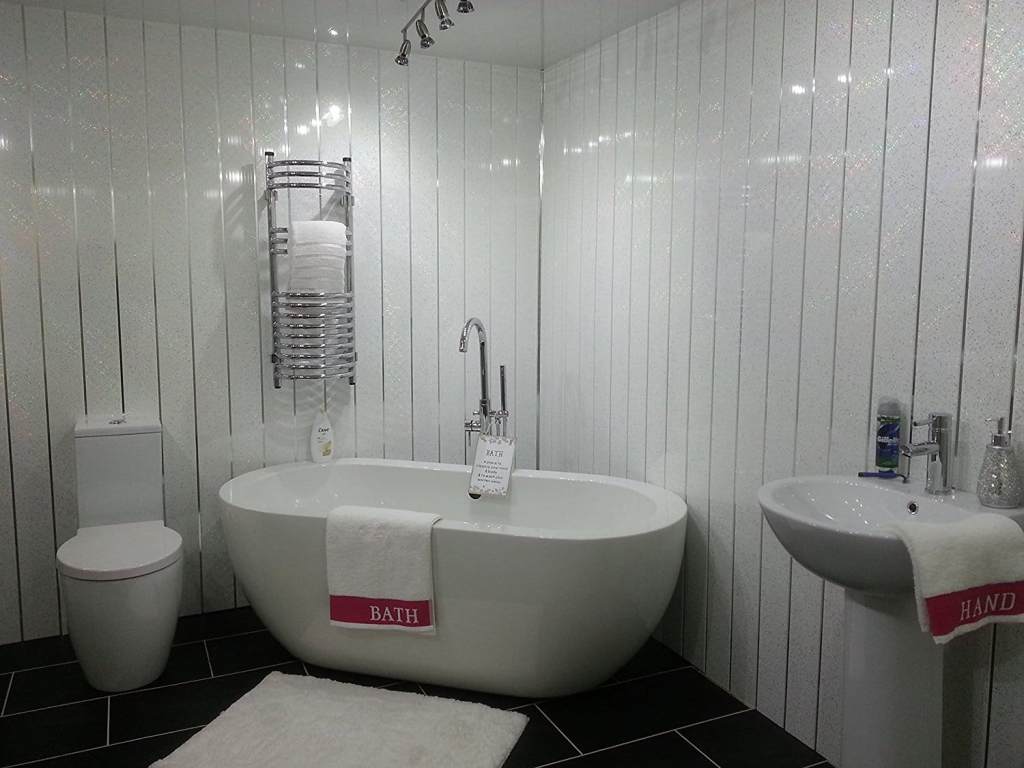
Colour with Silver Stripes in PVC Sheets
Marble Textures:
- Some PVC sheets are hot filmed treated with stone textures mimicking the look of stone. Such sheets are useful in bathrooms, kitchen, toilets, etc.

Marble Texture PVC Sheets
There are different types of corner edge moulding available to cover the edges of wall panelling.
(a) H Joint: These are useful to join perpendicular pattern sheets that are in one plane.
(b) Corner Cove: These are edge closing trims that has a cove design for aesthetics. It can be used as a skirting.
(c) F Edge Trim: The F edge trim covers the thickness of wall panelling. They are useful in covering panels near door jambs and window opening.
(d) Internal Corner Edge Trim: These are useful in covering corner edge junctions and are applicable in the internal side of wall panelling.
(e) External Corner Trim: These are useful in covering corners of the wall and are applicable on the external side of wall panelling.
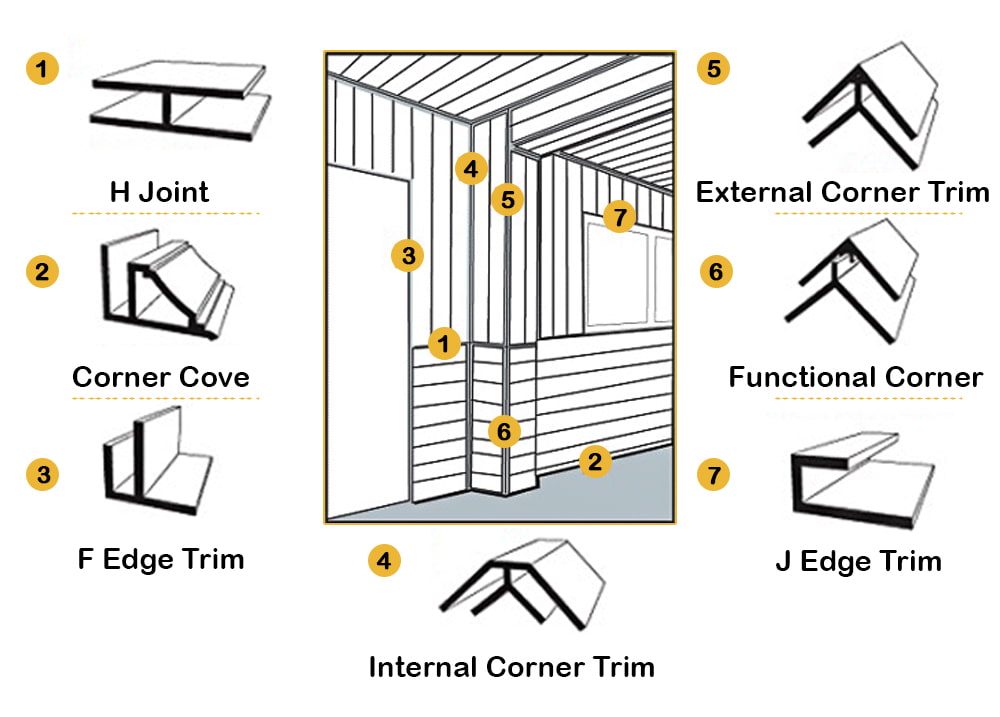
Types of Trim– PVC Wall Panelling
(f) Functional Corner: These are similar to corner edge trims but are better in strength to take the abrasion or wear and tear at a lower level of wall panelling.
(g) J Edge Trim: These are similar to F edge trim but are used to take PVC sheets horizontally. Moreover used to cover sheets above an opening.
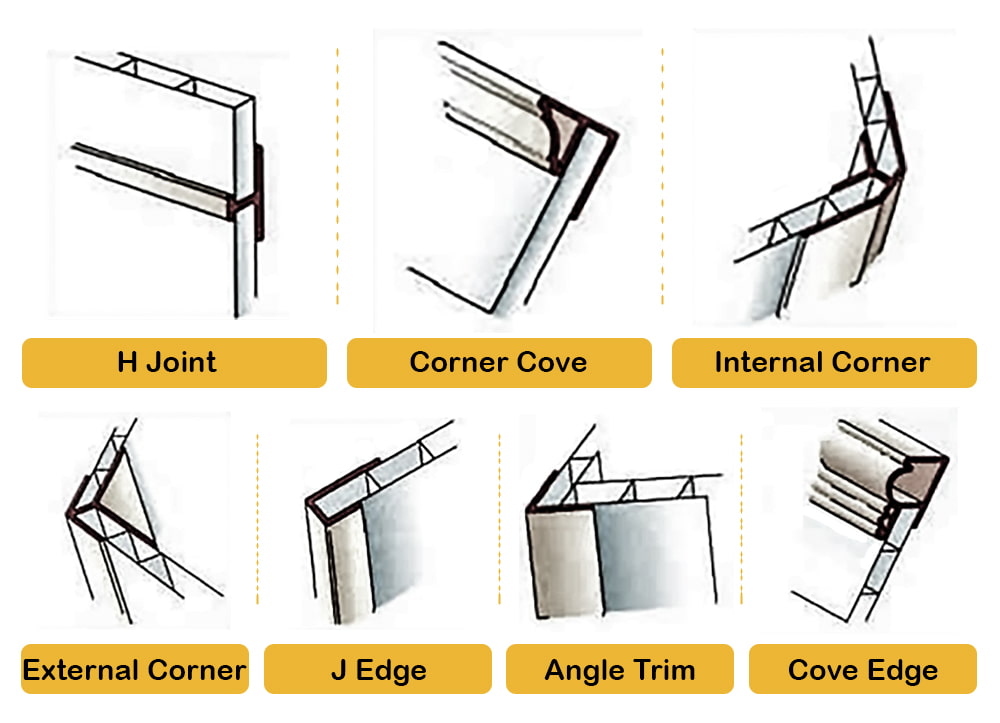
Edge Profile with Sheets
03. 3D PVC Wall Panels
These are panels with embossing effect in PVC. They give a 3d effect by creating light depth in the wall. They give an opportunity to give a modern and contemporary look to space.
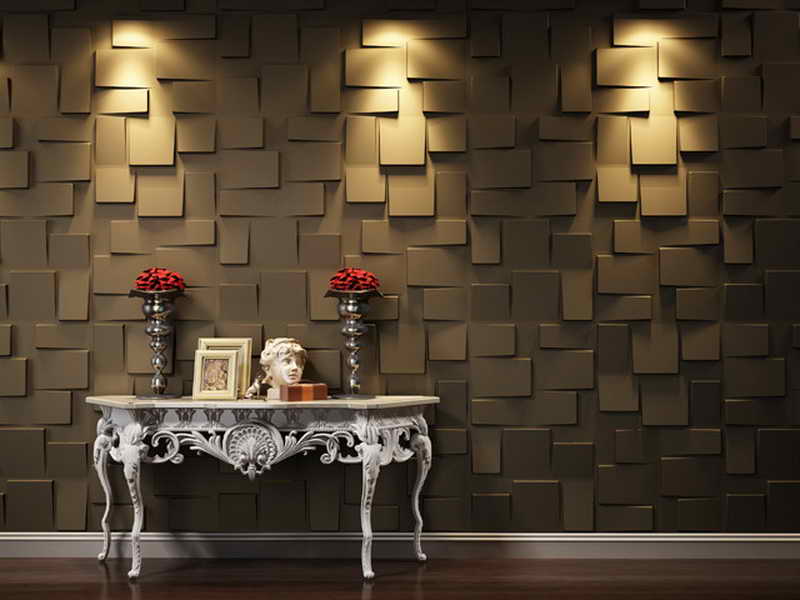
3D PVC Wall Panel
Pros of Using PVC Panels
- When there is dampness in the wall, PVC wall panels are most useful, as it can resist moisture very effectively.
- We know that PVC is an environment-friendly and many medical equipment and food packages are also made of PVC material because they cause no harm to the environment. Thus, such material is useful in hospitals, sports arenas and schools.
- PVC show good resistance against moisture. The surface has no pores or cracks, so it prevents the growth of bacteria’s. They have a polyurethane layer which gives a smooth and a plain surface to the board. So it becomes easy to clean such boards. No dirt gets accumulated on the surface and it is easy to maintain such kind of wall panelling. Thus, such panels are suitable for kitchen and toilets along with other rooms.
- They don’t rust when used in external surfaces of the house.
- The ignition temperate is 60 C degrees, so they don’t burn easily. In case of fire, they emit lesser smoke compared to wood and the by-products formed from combustion are less toxic in nature.
- These are light weight panels, so the installation process is short. These panels can be easily cut and installed without grouts.
- Many panels have interlocking or tongue and groove system which makes the process of fixing fast. It also helps to replace a single panel whenever it gets damaged.
- The PVC wall panels are good for insulation.
- The PVC panels are recyclable and one can handover old one to a plastic recycling facility.
- The PVC panels are available in many colors, designs and shapes. So, it offers many options for a designer to create a decorative wall surface.
- The PVC panels are finished surface panels. They need no extra finishing like painting or polishing etc.
Cons of Using PVC Panels
- These are final finished panels, one need to take caution that it doesn’t get hit by a sharp object that can cause scratches on it as it will be difficult to remove or hide or treat such scratches.
- Nailing/Screwing such boards can be tricky sometimes. If the screw goes wrong, the same hole cannot be used to screw the board
Well, now when you know so much about PVC panels. Hence, you can opt for PVC Wall Panels and make your walls look attractive and decorative!
Tell me where are you thinking to plan it in your house? Share your thoughts and experience on PVC Wall panels.
Also Read:
WPC Board (Wood Plastic Composite) – Things You Need To know!!!
Gypsum Board: All You Need to Know!
Image Courtesy: Image 2 – ecoste, Image 3 – innoshouse, Image 4 – ramahomedecor, Image 5, Image 6, Image 7 – mcnettimages, Image 8, Image 11 – csmau
Author Bio
Urnit Kaur – Urnit Kaur is an Architect based in Ahmedabad. She loves Design challenges and it helps her client’s to bring their thoughts into reality. She has been passionately involved in Architecture from designing projects to managing them on site since 2014. She has been part of Ahmedabad Heritage Dossier project, designing ISRO Bopal campus and currently working on other varied scale projects with Aakruti Architects. With her rich experience in fieldwork, she shares tips and facts in her blogs about Architecture, Interior and MEP services. She believes learning should never stop, so she has developed a hobby of creating colorful home décor items by experimenting different materials and aesthetics.

